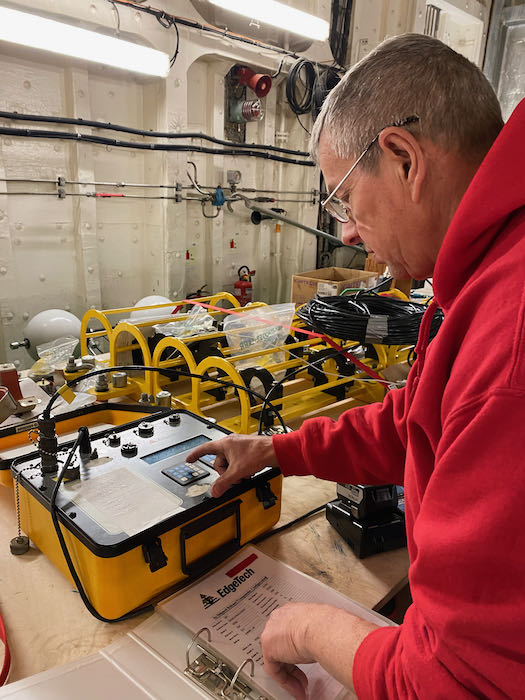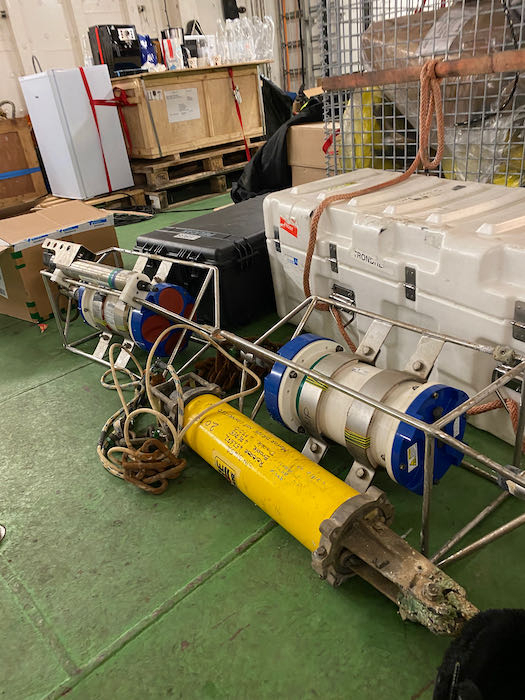Yesterday was a tense, but big, day for Science. The technical crew set out to recover a mooring that had been anchored to the bottom of the Laptev Sea since 2018 in a location that has been monitored since 2002.
A mooring is a set of floats connected to a series of instruments connected to a long chain connected to a release mechanism connected to an anchor at the bottom of the seafloor.
 A schematic diagram of the mooring. Look closely for the polar bear at the top!
A schematic diagram of the mooring. Look closely for the polar bear at the top!
The ship got into position late last night. Mooring technicians Jim Dunn and John Kemp from the Woods Hole Oceanographic Institute (WHOI - pronounced who ee), used a computer to send release signals to the release mechanism about 2700 meters below the surface.
 Technician Jim Dunn checks the codes for the release mechanisms. Recently, codes have been repeated so some other ship could release the wrong mooring.
Technician Jim Dunn checks the codes for the release mechanisms. Recently, codes have been repeated so some other ship could release the wrong mooring.
They "pinged" the release mechanism but initially didn't hear back. They tried again. No response. Finally, they inputted the release command. And waited. If the release mechanism does not work, all the data will be lost.
 Mooring release mechanisms programmed and ready to be deployed later in the cruise.
Mooring release mechanisms programmed and ready to be deployed later in the cruise.
After several minutes, someone spotted the floats bobbing in the waves. The captain navigated the ship so that the apparatus could be recovered. After 3 years in one of the most remote and harsh environments on earth, the sensors were recovered.
 Sensors recovered from the Laptev Sea. They have been recording data under the ice since 2018.
Sensors recovered from the Laptev Sea. They have been recording data under the ice since 2018.
 Data sensors and the all-important release mechanism (yellow). If it fails, no data.
Data sensors and the all-important release mechanism (yellow). If it fails, no data.
Chief Scientist Igor Polyakov displayed great relief this morning - these were his "babies." After a quick scan of the data, he notes that preliminarily the dynamics of the ocean are changing significantly, stating that "this is not the same ocean."


Comments
Add new comment